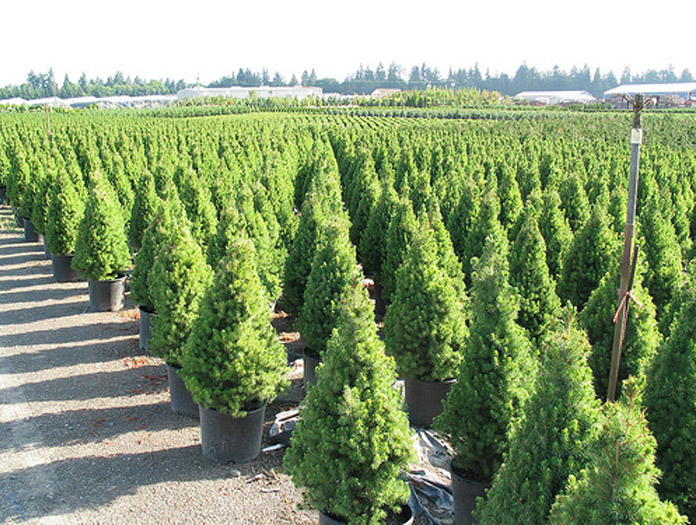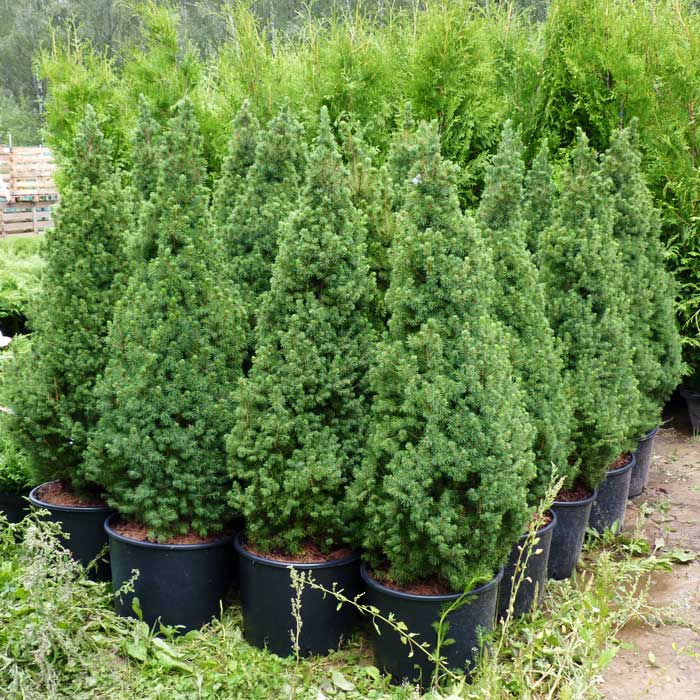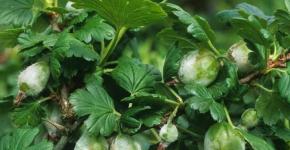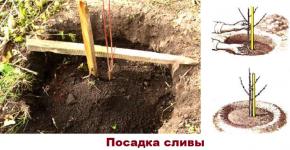Planting and growing
Spruce Canadian "Konika" is a fairly popular coniferous tree, which is actively used when creating park areas by landscape designers. In all its characteristics, Konika (glauca) is a Canadian gray spruce, only in miniature. It was specially bred by breeders who pursued the goal of obtaining a full-fledged spruce, only much smaller in size, which would retain all its qualities and external decorative beauty. Thanks to their efforts, today konika glauka occupies a leading position in decorating garden plots and park lawns.
Konik spruce has an average height of about one and a half meters, in some cases, some specimens can reach four meters. The dwarf tree has a cone-shaped crown with thin and soft dove-colored needles. The root of the conic is rod and located almost on the surface of the soil. Spruce grows slowly, its height increases by an average of three centimeters per year and it reaches one and a half meters only by the age of twenty. Konika belongs to coniferous centenarians and can decorate garden plots for five centuries.

Spruce Konika is represented by two species popular in landscape design. These are Konica glauca and Alberta globe. Konika glauka is a dwarf spruce (1.5 m) with a gray cone-shaped crown. Alberta globe is a coniferous tree with even smaller parameters. This is a low-growing spruce, its height rarely reaches one meter. The crown is spherical, and the needles are soft and dense. A brief description of the appearance does not, of course, give the whole picture. Canadian Konik must be seen with your own eyes in order to appreciate the beauty of its appearance. But here is a description of the conditions for its cultivation and the rules of care, it will help to find out all the subtleties and advantages of planting a Canadian spruce in a garden plot.
Planting and growing
Dwarf gray spruce can be grown not only in open ground, but also as an ornamental houseplant, of course, subject to certain rules.
Konika does not tolerate high temperatures in winter. Therefore, at this time, flowerpots with spruce must be placed in rooms where the air temperature does not exceed ten degrees Celsius. Room maintenance also requires regular and abundant watering of the soil. But it must be strictly dosed, excessive moisture adversely affects the condition of the needles, and it changes shade, and may also begin to crumble.
In the summer, it is recommended to take the spruce pot out into the fresh air and install it in well-lit areas, but at the same time protected from direct sunlight. To maintain the decorative qualities of the needles, the tree is periodically sprayed with warm purified water in the summer. When growing Koniki, one should not forget about adding additional substances to the soil. It is necessary to use special complex fertilizers for coniferous trees. This may be the drug "Zircon", "Hol", "Epin" and others.

But even so, it is better to grow Canadian spruce in the open field. After all, this is her natural habitat, which means that under these conditions she will reveal her decorative qualities as much as possible, and caring for her will be much easier.
Planting glauca spruce should be carried out according to the following rules:
- you need to choose the right place;
- prepare a seedling;
- provide the necessary soil in advance.
Planting Koniki should be carried out in areas of the garden where there is partial shade, so that the scorching sun will definitely damage the needles. In addition, the tree should be naturally protected from drafts and strong winds. Spruce should be planted on level ground so that in spring melt water does not collect there and contribute to the appearance of rot on the roots.
Planting a dwarf coniferous tree is possible at any time of the year. But spruce adapts best to a new place in the cool season. Therefore, it is best to plant Konika in the ground in spring or autumn. Also, some gardeners practice planting seedlings in winter, when the air temperature is slightly above zero and the ground is not frozen. In the first months after planting, they ate in the ground (this applies to the autumn and spring periods), it is watered twice a week. At the same time, the volume of water per tree is at least ten liters.
Before planting, the soil is prepared. The area where the spruce will be planted is dug up in advance. Holes are made for trees and fertilizer for conifers of long duration and humus are introduced into them. Then the soil is mixed with turf, peat and sand. And only after that, spruce seedlings are planted in the ground, the roots of which are previously cleared of the old earth. The trees need to be watered, and the ground around should be mulched with peat.
Proper planting of Glauka spruce in open ground is only part of all the worries when growing Koniki in the garden. In addition, it is necessary for the decorative tree to provide proper care.
Proper care and reproduction
Dwarf gray spruce is an unpretentious garden plant. Caring for her is quite simple and elementary. All the tree needs is:
- regular watering;
- protection from the scorching sun;
- fertilizing the soil;
- timely detection of the disease and its treatment.
Here, perhaps, is the whole care. But even under such simple conditions for growing fir trees, diseases can occur and pests can appear that not only spoil the appearance of the trees, but can also lead to the death of Konika. Most often, if the care was not sufficiently organized and mistakes were made during planting, the following diseases and pests appear on the spruce trees:
- tracheomycosis is a fungus that appears in the soil and damages the roots. This disease is not treated, the affected plant is subject to complete destruction;
- rust is a fungal disease of the crown. The manifestation of the disease is rusty neoplasms on the branches. Affected trees should be sprayed with special preparations once a week until completely cured;
- coniferous fungus (Schütte) - it covers the needles with a white bloom, then it darkens and falls off. They fight the fungus with a solution of copper sulfate and special preparations such as Trichodermin or Alirin-B.
Poor care of spruce leads to the fact that pests attack it. Most often it is a false shield and bark beetle. And if it is possible to deal with a false shield with the help of special means of combating garden pests, then it is almost impossible to cope with a bark beetle. It damages the bark and penetrates into the inside of the trunk, where it lays its larvae at a sufficient depth. If the bark beetle barely started, then it would be best to destroy it in order to prevent further reproduction of this pest.
At home, the Canadian horse is propagated by cuttings. Of course, this issue must be approached with all seriousness, since spruce propagation by cuttings requires some effort and some time. Therefore, if you decide to grow new spruce specimens on your own, then you need to be patient.
And so, the cuttings are harvested in June. They are selected from the lower branches of a fairly mature tree (5-7 years old). The length of the cuttings should be about ten centimeters and they should have a “heel”, part of the bark of the branch from which they were cut. Then, the cuttings are placed for two to three hours in a growth stimulator solution and only after that they are planted in a specially prepared soil for rooting to a depth of two and a half centimeters. For cuttings planted in this way, regular care is needed. They need to be kept in constantly moist soil, while simple watering is alternated with watering with a growth stimulator solution. Also, the soil around the cuttings is periodically loosened. Within three months, tissue forms on the lower sections, which tightens the wounds and promotes the development of roots. The root system of the cuttings begins to develop only the next year. Note that spruce cuttings need proper care for about five years, after which a fully formed young seedling can be planted in the garden.
As you can see, the cutting process is quite laborious, but it allows you to independently grow new spruce specimens for your garden.


